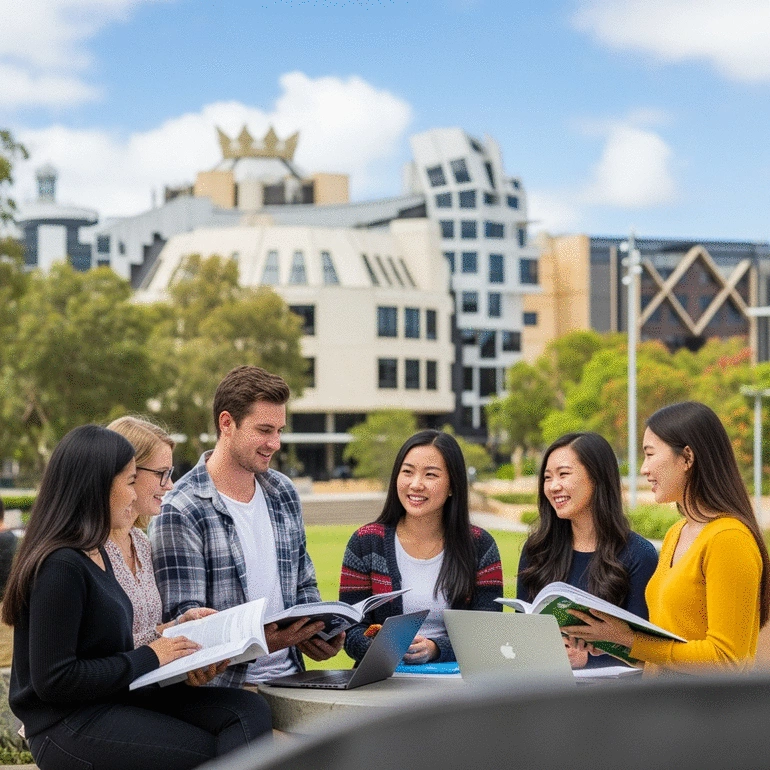Sydney: High Living Costs
Accommodation: ~A$1,500/month (shared apartment)
General Living: Higher than average (food, transport, utilities)

Understanding the financial landscape as an international student in Australia is essential for a successful study abroad experience. Are you aware of the various expenses you will encounter? Let’s break down the key factors that will guide your budgeting and help you navigate this exciting journey.
Below is a comparative breakdown of estimated monthly expenses across key Australian cities for international students in 2026, focusing on accommodation and general living costs. For a more detailed guide on managing your finances, check out these budgeting tips for Australian students.
Accommodation: ~A$1,500/month (shared apartment)
General Living: Higher than average (food, transport, utilities)
Accommodation: ~A$1,200/month (shared apartment)
General Living: Moderate (rising tuition)
Accommodation: ~A$1,000/month (shared apartment)
General Living: Good for budget-conscious
Accommodation: Lower options available
General Living: Popular for affordability
Accommodation: Competitive rates
General Living: Good balance with vibrant life
Accommodation: Slightly higher expenses
General Living: Offset by cultural value
Accommodation: Lower cost of living
General Living: Quality education, budget-friendly
As an education consultant at LearnRoute Australia, I often hear from international students about their concerns regarding the cost of living in Australia. It’s a vital aspect to consider as you plan your study abroad journey. In 2026, understanding the various components that contribute to your living expenses will help you budget effectively and adjust to life in Australia.
Many factors come into play when determining your living expenses, including accommodation, food, transportation, and healthcare. By breaking these down, we can get a clearer picture of what to expect during your time here.
By keeping these factors in mind, you'll be better prepared to navigate your finances while studying in Australia.
The cost of rent is one of the largest expenses for international students. Major cities like Sydney and Melbourne tend to have higher accommodation costs compared to smaller cities. For example, in 2026, you might expect:
When considering where to live, it’s essential to weigh these costs against your budget and lifestyle preferences. For more details on managing your monthly expenses, refer to our managing monthly living expenses checklist.
Feeding yourself can be manageable on a budget, but it does require some planning. A typical food budget for a student is around $200-$400 AUD per month, depending on personal eating habits. To save on food costs, consider cooking at home and shopping at local markets.

By being mindful of your food and transport choices, you can stretch your budget further!
Healthcare is another crucial aspect of living in Australia. As an international student, obtaining health insurance is a requirement. The cost of health insurance can range from $400 to $800 AUD annually. This investment ensures you are covered in case of medical needs, which is absolutely essential when living abroad.
Understanding these healthcare and living expenses helps you plan better for your stay in Australia. Remember, budgeting is a key part of your success!
To make the most of your budget while studying in Australia, consider utilizing local resources such as community markets and student discounts. Many cities offer special deals for students on transportation, food, and leisure activities, allowing you to enjoy your experience without overspending.
As we step into 2026, it’s vital to have a clear picture of the financial landscape for international students in Australia. The costs associated with living, tuition, and other expenses can vary significantly based on your chosen city and lifestyle. By understanding these differences, you can better prepare for your study abroad journey and make informed decisions.
Here are some key takeaways that highlight the costs and tuition across major Australian cities:
Preparation is key, and as you embark on your study abroad journey, having a final checklist can be immensely helpful. Let’s ensure you’re ready!
Before you take the plunge into studying in Australia, here are essential items to cross off your checklist:
Taking these steps will help you feel more confident and prepared as you transition into this new chapter of your life!
Finding ways to finance your education is crucial, and fortunately, there are numerous resources available to assist you. Scholarships specifically for international students can alleviate some of the financial pressure. Make sure to research the following:

By tapping into these resources, you can significantly ease your financial burden while studying in Australia. For valuable information on various financial support options, explore financial aid for international students.
As you navigate your academic journey, don’t hesitate to reach out to student support services at your university. They can offer invaluable guidance on managing your finances effectively. Here are some services to utilize:
These resources can empower you to make informed financial decisions throughout your studies.
While studying in Australia, finding part-time work can help support your living expenses. However, it’s crucial to balance your work commitments with your academic responsibilities. Here’s what you should consider:
By strategically managing your work and study commitments, you can enhance your experience while supporting your financial needs.
LearnRoute Australia is dedicated to empowering international students in their academic journey down under. We provide comprehensive guidance on universities, courses, and visa applications, ensuring a confident transition to studying in Australia.
